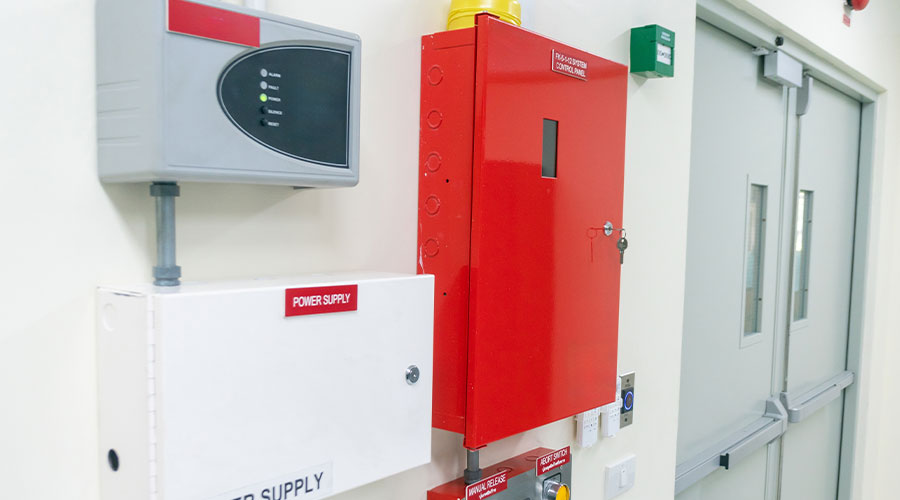« Return to FMDAA entries

Frederick (Md.) County Public Schools
Overview
Our mission statement, Maintaining the Optimal Learning Environment, acknowledges that effective instruction relies on uninterrupted availability of safe, comfortable classrooms. We also provide a gathering place for churches, sports leagues, and girl scouts. Last year, 526 groups hosted 32,439 events in our schools. Last year, student enrollment increased by 826, and our facility inventory expanded. Yet the department budget did not increase commensurately. We remain efficient, without diminishing our capacity to serve. As such, we must sustain a strong team of dedicated employees.
Effective Hiring
Problem — Over time, interviews proved inconsistent in targeting successful team members. We hired individuals with laudable character, but lacking in trade knowledge. Course of action – We pursued means to obtain, or develop, means to evaluate candidates’ trade knowledge.
Challenges – We talked with consultants and government agencies about testing and gap analysis. We encountered only complicated, costly options. So we developed our own tests. Using our tests, we can delineate candidates’ aptitude for troubleshooting and repairing building systems. The test is administered verbally, taking only minutes during the interview. Immediately following the verbal test, we witness candidates performing two simple hands-on tasks.
Outcome – One test is provided; please see Attachment 1. This test has its base in elemental residential heating and cooling. Less than 10 percent of candidates pass. Without the level of understanding exhibited in our test, a candidate is unlikely to quickly develop the skills that we need for our more complex systems.
New Employee Onboarding
Problem — A newly hired employee quipped that our orientation was lacking. We laughed when he stated that we failed to direct him to the coffee maker or even to the restroom. Upon reflection, we acknowledged that this situation wasn’t humorous. It was shameful. Not only had we failed to impart our vision and policies, we hadn’t even addressed his basic physical needs. Our research found few organizations with onboarding programs. Absent dedicated onboarding resources, it appears that onboarding falls by the wayside for all but the most disciplined organizations.
Course of Action — It made the most sense that new employees engage onboarding in a self-directed manner, precluding the need for scheduling and hosting live presentations. We needed training that we could generate, maintain, and administer with minimal resources. We wrote scripts for ten training modules, each addressing critical topics. We recorded staff reading these scripts, created graphics to match, and integrated the recordings and graphics into modules. We issue each mechanic a tablet computer, and our worksites are Wi-Fi capable. We transmit an email to new employees with a link to the onboarding modules. They view the modules at a time and pace that is convenient to them.
Challenges – We needed a project champion to bring this concept to fruition. We asked the Career and Technology Center graphics teacher for the names of her most promising students. We interviewed and hired the most auspicious candidate — a high school sophomore. You should meet Charlotte. She’s an honor roll student-athlete, and star pupil in digital design. While we hired Charlotte to create inspiring graphics, we learned that we had grossly underestimated her potential. She quickly assumed full ownership of this project. Acting as project manager, she completed it with remarkable efficiency and professionalism.
Outcome – We welcome you to view our modules at https://tinyurl.com/monboarding.
Leadership Development
Problem – Our superintendent, having met with our department’s aspiring leaders, concluded that we were lacking in leadership development. Equally poignant, our board of education released aspirational goals, including, “We will hire, support, and retain staff who champion individual, professional, and student excellence.”
Course of Action – Much like Maslow’s hierarchy of needs, we endeavored for employees to attain profound professional fulfilment through mastery of skill and by empowering them to succeed in tasks that permit increasing levels of autonomy. Leadership is not linked to a position or title. We need leadership at all levels of our organization to inspire initiative, confidence, and purposeful decision-making.
Challenges – A comprehensive training program based on external resources was beyond our fiscal resources. Embracing the tenet, “doing something is better than doing nothing”, we began scheduling quarterly meetings using in-house expertise and free external resources. At these meetings, much like professional conferences, employees select among several training sessions, because we came to appreciate how employees favor choice in training. Initially, the most common criticism noted was the lack of coffee and donuts. Now we ask a vendor to participate, providing both training and refreshments.
Outcome – Our training topics promote expansion of perspective and skill, including: effective communication; root cause failure analysis; emergency preparedness; cultural proficiency; motivating others; and strategic planning; see Attachment 2. Other topics foster an understanding of our students: adverse childhood experiences; creating welcoming and affirming schools for transgender and gender nonconforming students; and special education program needs. Afterwards, trainees receive an online survey. The quick survey is based on Kirkpatrick’s four-level training evaluation model. Overall, we earned an 85 percent positive survey rating.
Our team performs. We are open to suggestions and criticism, and we adapt accordingly. A recent state inspection noted, “Thorough onsite custodial care and aggressive preventive maintenance are evident in the superior conditions found inside and outside of this very well maintained facility.”
Customer surveys can be onerous. We abandoned our survey in favor of a personal visit. Once a year, our managers visit every principal to ask, “What in your facility inhibits instruction, threatens safety, or causes you consternation?” The number of principals who say, “Everything is great” increases each year.
In-house Participants
Charlotte Brittain, FCPS Student and onboarding project manager; Erik McKay, supervisor and HVAC trade test author; Tina Murray, executive secretary and training planning and logistics; Bob Wilkinson, director of maintenance and operations
Results
Interview Material - HVAC Schematic Symbols PPT
Rev BOE Review DOC
↑ Back to top








